By: Martha Cecilia Ovadia, Senior Program Associate, Equity and Communications
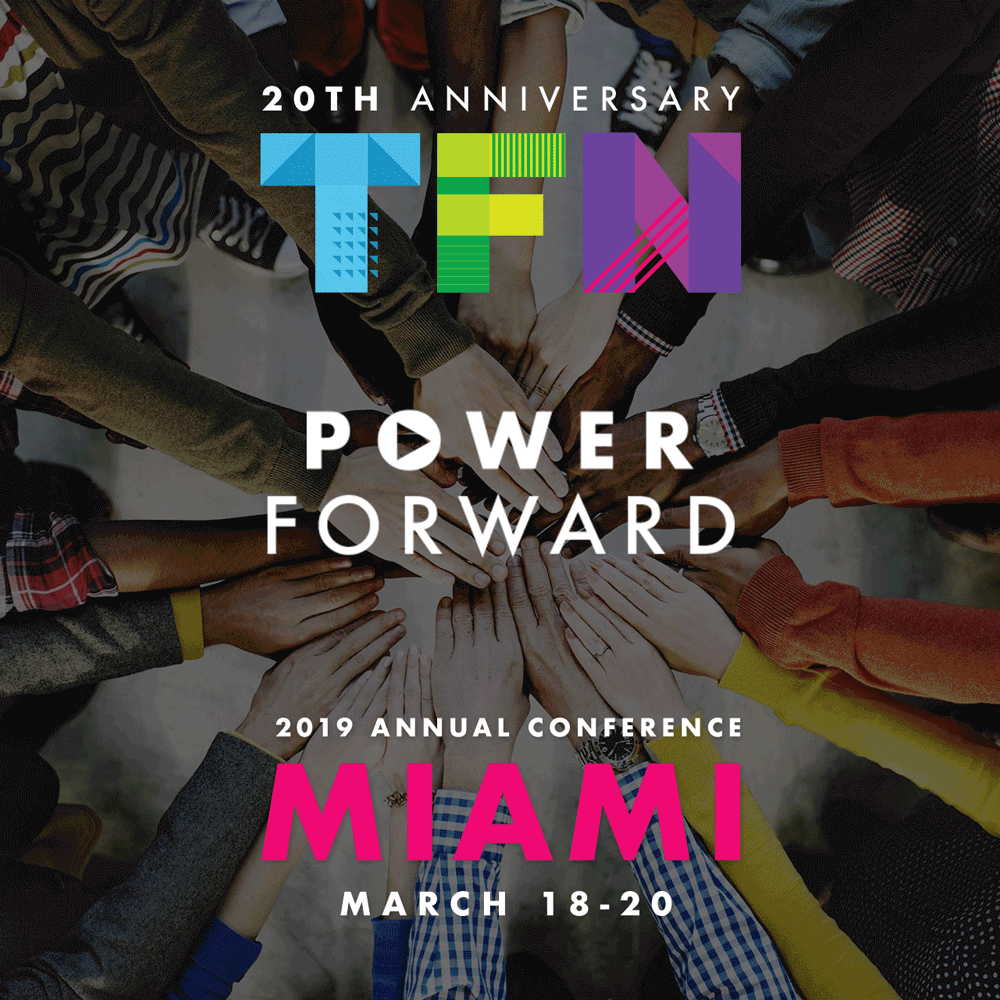
The Funders’ Network 20th Anniversary Conference, March 18-20, will offer plenty of opportunities to experience and explore Miami, including five mobile workshops created in partnership with Urban Impact Lab, and a post-conference tour that will focus on the impact of local anchor institutions.
Read below for more information — and be sure to check out our full #TFNMiami agenda here.
Register here.
Post-Conference Tour: Additional Spots Available!
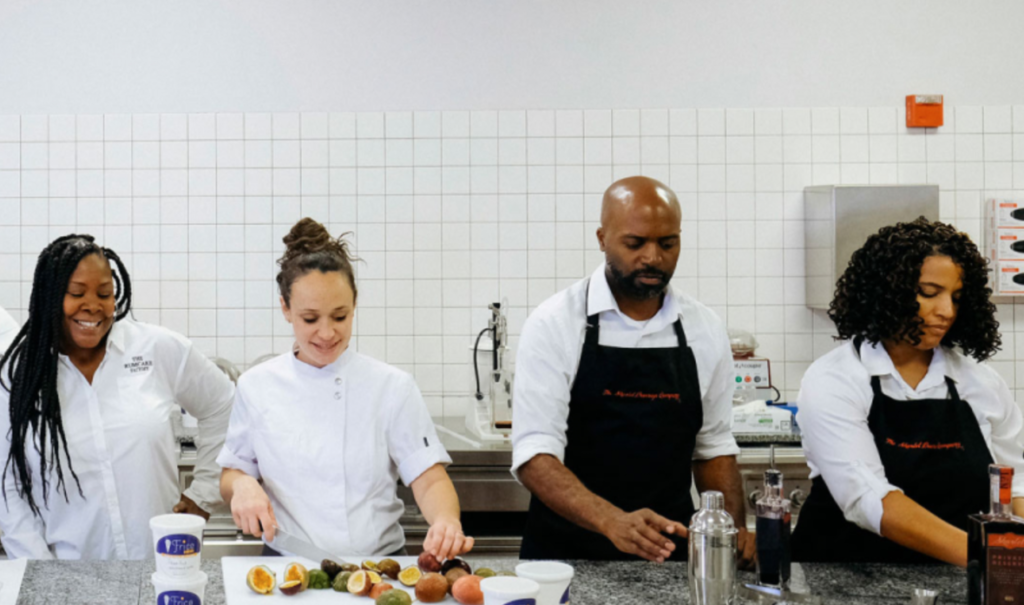
Anchoring Change: The New Civics of Miami’s Next Economy
Wednesday, March 20th
12:00 p.m. – 4:30 p.m.
Updated Itinerary: In a city that is constantly shifting and changing, universities, hospitals and other place-based institutions have become essential building blocks of Miami’s civic infrastructure. Join this post-conference mobile tour to Florida International University to hear and discuss how Miami’s leading institutions are partnering with the philanthropic sector to leverage the myriad resources they direct to help create an inclusive economy in a city that continues to struggle with deep economic disparities. Featured projects include StartUp FIU, the Grow2Heal initiative at Baptist Health of South Florida’s Homestead Hospital, and the Urban League and Broward County Public Schools’ procurement partnership. The bus for this visit boards immediately upon close of the conference at noon and will drop participants at Miami International Airport by 4 p.m. before returning to the hotel. Lunch-on-the-go will be provided.
Mobile Tour Designers and Discussion Moderators:
| Valeria Perez-Ferreiro, Vice President, Citi Community Development |
| Janisse Schoepp, Vice President of Operations and Strategy, Health Foundation of South Florida |
| Charles Rutheiser, Senior Associate, Annie E. Casey Foundation and Co-Chair, TFN Anchor Institutions Funders’ Group |
Please note: This tour is included in your registration, but requires a separate RSVP. Please email Alicia Kitsuse (alicia@www.fundersnetwork.org) to confirm your spot.
#TFNMiami Mobile Tours
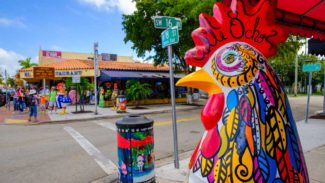
TFN’s annual conferences offer insight on a range of issues at the intersection of equity, environment and economic opportunity — and not just with the confines of the conference venue. Our mobile workshops offer a chance to explore and engage with the communities in our conference city. This year, TFN is partnering with Urban Impact Lab, a Miami-based team of urbanists, scientists, technologists, and designers, to craft compelling and thought-provoking mobile workshops that will introduce us to the people and places that shape this multicultural, semi-tropical city. Check out the mobile tours below!
Registration for mobile workshops will be available on site during the conference.
On the Waterfront: Biscayne Bay/Miami River
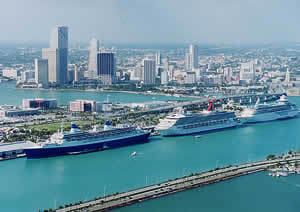
Biscayne Bay is one of Downtown Miami’s most important assets, yet it is also a main contributor to Miami’s vulnerability. From an active seaport to recreational use, the bay meets numerous needs for this community. With so many demands on this fragile ecosystem, the health of Biscayne Bay is always held in a delicate balance.
Sea-level rise and flooding are just some of the challenges associated with Biscayne Bay — and Miami’s resilience is inextricably tied to how well the community can steward this invaluable resource while mitigating the effects of sea level rise.
This workshop begins at the Bayside docks, where the group will join historian Paul George on a boat ride along Biscayne Bay and into the mouth of the Miami River. George will anchor the group in a historical perspective of the bay and its surrounding communities, highlighting the area’s constant growth and expansion. While touring the waterways, local activists and advocates will illustrate the various needs and challenges they confront regularly and how they are organizing communities, sometimes miles away from the bayfront to build a more resilient Miami. Finally, a member of a city agency will share how Miami is moving forward with the Miami Forever Bond and driving investments into projects that may include a living shoreline and other sea level rise mitigation projects.
Cultural Paradox: Wynwood/Little Haiti

The Wynwood and Little Haiti communities exist in very close proximity to each other — both physically and conceptually. Both communities are buoyed by a distinct sense of place and rich cultural dynamics, yet are mired in issues of growing development pressures, gentrification and displacement.
Less than a decade ago, Wynwood transformed from a mostly quiet, light industrial area into a thriving cultural hotspot, propelled forward by an art scene that has become globally recognized. In the last five years, Little Haiti has both benefited and suffered from the rise of Wynwood — and more broadly, Miami’s — cultural evolution. The city’s investments in Little Haiti such as the development of the Little Haiti Cultural Complex have attracted displaced Wynwood artists, businesses and residents. This has served to elevate Little Haiti’s cultural significance but has also attracted some of the same development attention that priced many locals out of Wynwood. To add to the complexity in the community, Little Haiti is located along Miami’s ridge (a relatively high elevation) making much of it desirable real estate as it is naturally more resilient to sea-level rise and flooding.
The story of Little Haiti is far from complete. Community groups and residents have come together to preserve and protect their community, facing development pressures head on and forming coalitions to advocate for their community — all while battling worsening immigration policies at the federal level. This session starts with a sneak peak of Wynwood, which in many ways can be considered the “after” scenario should Little Haiti’s growth and development proceed unchecked. Traveling between communities, participants will catch glimpses of the type of development that has expanded in the overall area in less than a decade. Participants in this bus and walking tour will meet and learn from community leaders and organizers, and experience one of the community’s cultural centers and iconic markets.
Rails and Trails: Transit and Underline Tour
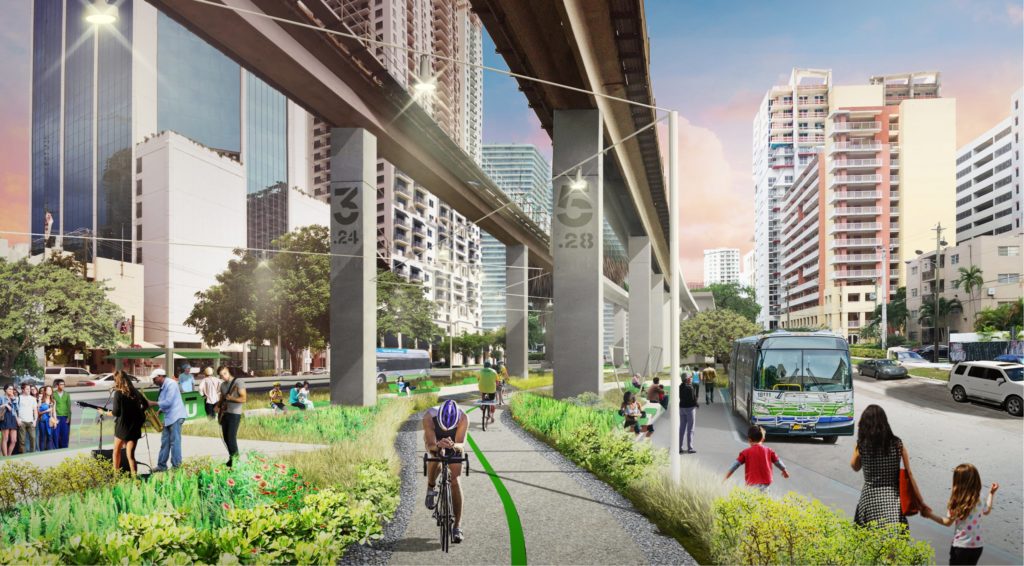
A variety of reliable, useful mobility options are critical to the sustainable growth and development of all cities. Miami has long struggled with its auto-centered development. Now growing to almost three million residents countywide, the region must find ways to improve and expand other mobility options. Crippling congestion, exorbitant tolls, reduced quality of life, resilience challenges and high cost of living are all contributing to the demand for improved transit, walking and biking options. Various organizations have sprung up to advocate for more and better mobility options — including advocates for The Underline.
When complete, The Underline will be a 10-mile linear park running beneath Miami’s elevated MetroRail line, as well as a urban multi-modal trail connecting communities along the US1 corridor. From mobility and active transportation to health, resilience and economic development, The Underline encompasses many aspects that are important to the future of our community. This workshop starts with a lively walking and transit experience led by the Director of Transit Alliance Miami. Challenges and opportunities will be highlighted and participants will be encouraged to share their immediate impressions. The group will travel to one of northern points of The Underline where they will be introduced to their next mode of transportation (likely electric scooters or e-bikes — stay tuned for details!)
The group will experience The Underline in its current state while Meg Daly, president of The Friends of The Underline, shares her story and illustrates the coming improvements to the corridor. The group will visit at least one existing business on the corridor before heading back to the starting point. Along the way, Daly will share the various elements that have been incorporated into the design, including health stations, public art, solar lighting and more.
Resilient Little Havana
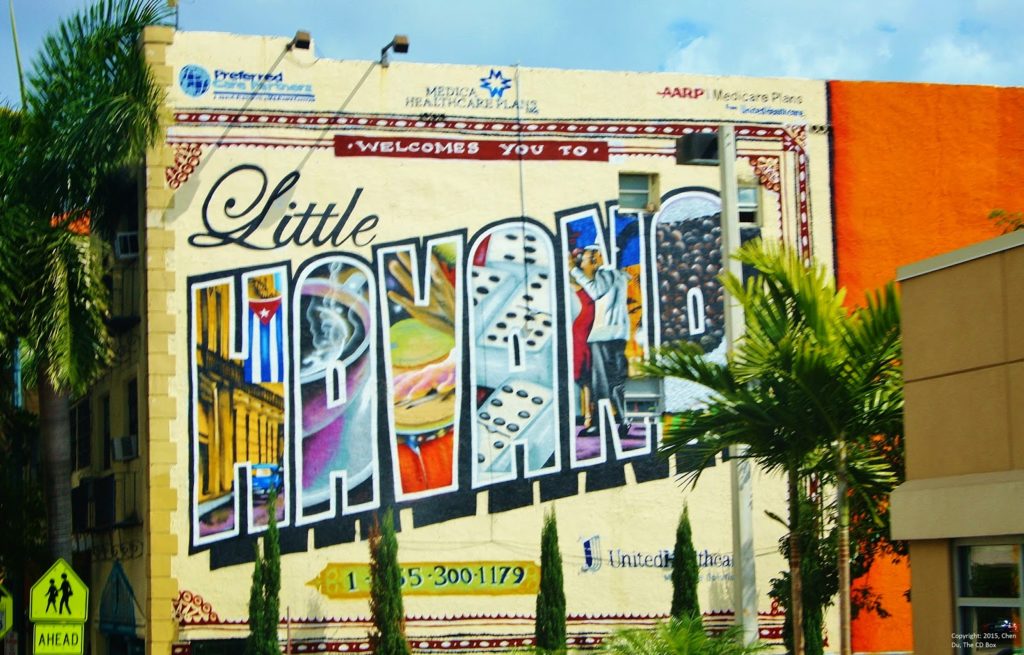
Little Havana, the cultural heart of South Florida’s Cuban exile diaspora, has grown over the years to include a diverse mix of Latin American immigrants and refugees. The Little Havana community, however, has too few parks for its size and density — save for José Martí Park, named after the Cuban poet and national hero. The park has become the focus of several local and national efforts, particularly as it relates to sea level rise and climate change. Currently, the park floods during the fall King Tide events and is increasingly vulnerable to flooding at other times of the year. Just a mile or so away, the neighborhood’s iconic Calle Ocho, or Eighth Street, has become a popular tourist destination, attracting new bars and restaurants to the area. Yet little of this economic activity permeates into the community. Taken as a whole, Little Havana is ground zero for a combination of development and gentrification pressures as well as significant sea level rise challenges. Community leaders and local organizations recognize the need for action and are working together with residents to find and implement solutions. This workshop will start at José Martí Park, where participants will explore the park space and meet the community liaisons team, as well as representatives from the Health Foundation of South Florida and the City of Miami, to illustrate some of the steps being taken towards greater resilience.
West Coconut Grove: Combating Cultural Erosion
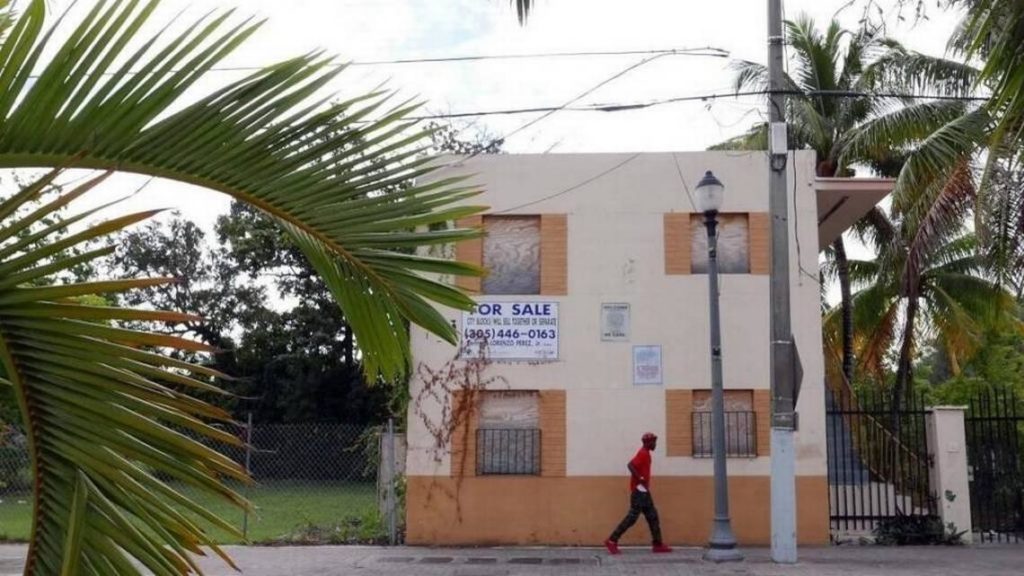
The West Grove is situated between two affluent neighborhoods, Coconut Grove and Coral Gables. Under constant development pressure, it is one of Miami’s original communities, settled predominantly by Bahamian immigrants who were brought to South Florida to build Flagler’s Railroad. Recent policy actions taken by the local commissioner in collaboration with West Grove community groups have sought to preserve or build new affordable housing, partly in an effort to hold back the cultural erosion plaguing this community. This workshop will begin with an exploration of the significant influence this neighborhood had on the growth and development of greater Miami. Participants will explore the existing dynamics of historic designation vs affordability, growth vs cultural preservation and attempts at maintaining community power despite a declining population tied to the community’s origins.
